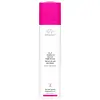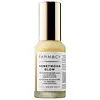What's inside
What's inside
 Key Ingredients
Key Ingredients

 Benefits
Benefits

 Concerns
Concerns

 Ingredients Side-by-side
Ingredients Side-by-side

Water
Skin ConditioningGlycolic Acid
BufferingButylene Glycol
HumectantGlycerin
HumectantSodium Hydroxide
BufferingLactic Acid
BufferingSalicylic Acid
MaskingTartaric Acid
BufferingVitis Vinifera Juice Extract
AntioxidantAloe Barbadensis Leaf Juice
Skin ConditioningOpuntia Ficus-Indica Extract
Skin ConditioningAesculus Hippocastanum Seed Extract
Skin ConditioningCamellia Sinensis Leaf Extract
AntimicrobialRubus Idaeus Fruit Extract
AstringentSaccharomyces Cerevisiae Extract
Skin ConditioningBuddleja Davidii Meristem Cell Culture
Skin ConditioningSclerocarya Birrea Seed Oil
HumectantSodium Hyaluronate Crosspolymer
HumectantAllantoin
Skin ConditioningHydroxyethylcellulose
Emulsion StabilisingGalactoarabinan
Propanediol
SolventCitric Acid
BufferingTetrasodium Glutamate Diacetate
Xanthan Gum
EmulsifyingHexylene Glycol
EmulsifyingPhenoxyethanol
PreservativeSodium Benzoate
MaskingCaprylyl Glycol
EmollientPotassium Sorbate
PreservativePentylene Glycol
Skin ConditioningSodium Carbonate
BufferingSodium Chloride
MaskingDisodium Phosphate
BufferingSodium Phosphate
BufferingEthylhexylglycerin
Skin ConditioningWater, Glycolic Acid, Butylene Glycol, Glycerin, Sodium Hydroxide, Lactic Acid, Salicylic Acid, Tartaric Acid, Vitis Vinifera Juice Extract, Aloe Barbadensis Leaf Juice, Opuntia Ficus-Indica Extract, Aesculus Hippocastanum Seed Extract, Camellia Sinensis Leaf Extract, Rubus Idaeus Fruit Extract, Saccharomyces Cerevisiae Extract, Buddleja Davidii Meristem Cell Culture, Sclerocarya Birrea Seed Oil, Sodium Hyaluronate Crosspolymer, Allantoin, Hydroxyethylcellulose, Galactoarabinan, Propanediol, Citric Acid, Tetrasodium Glutamate Diacetate, Xanthan Gum, Hexylene Glycol, Phenoxyethanol, Sodium Benzoate, Caprylyl Glycol, Potassium Sorbate, Pentylene Glycol, Sodium Carbonate, Sodium Chloride, Disodium Phosphate, Sodium Phosphate, Ethylhexylglycerin
Water
Skin ConditioningLactic Acid
BufferingPropanediol
SolventJojoba Esters
EmollientGlycolic Acid
BufferingPotassium Hydroxide
BufferingSalix Alba Bark Extract
AstringentCarthamus Tinctorius Oleosomes
EmollientVitis Vinifera Seed Oil
EmollientHibiscus Sabdariffa Flower Extract
Skin ConditioningCitric Acid
BufferingHoney Extract
HumectantEchinacea Purpurea Root Extract
MoisturisingPropolis Extract
Skin ConditioningRoyal Jelly Extract
Skin ConditioningHydrolyzed Sodium Hyaluronate
Skin ConditioningHydrolyzed Hyaluronic Acid
HumectantCurcuma Longa Root Extract
MaskingArgania Spinosa Kernel Oil
EmollientZingiber Officinale Root Extract
MaskingAmaranthus Caudatus Seed Oil
EmollientLimnanthes Alba Seed Oil
Skin ConditioningVaccinium Myrtillus Fruit/Leaf Extract
AstringentSaccharum Officinarum Extract
MoisturisingCitrus Aurantium Dulcis Fruit Extract
MaskingCitrus Limon Fruit Extract
MaskingAcer Saccharum Extract
Skin ConditioningMelia Azadirachta Leaf Extract
Skin ConditioningHelianthus Annuus Seed Oil
EmollientMelia Azadirachta Flower Extract
Skin ConditioningSalvia Hispanica Seed Oil
MoisturisingCetearyl Alcohol
EmollientGlycerin
HumectantArachidyl Alcohol
EmollientSclerotium Gum
Emulsion StabilisingCoco-Glucoside
CleansingPolyacrylate Crosspolymer-6
Emulsion StabilisingBehenyl Alcohol
EmollientArachidyl Glucoside
EmulsifyingSodium Benzoate
MaskingTocopherol
AntioxidantPotassium Sorbate
PreservativeCorallina Officinalis Extract
Skin ConditioningPolyglyceryl-10 Stearate
Skin ConditioningGluconolactone
Skin Conditioning1,2-Hexanediol
Skin ConditioningOcimum Basilicum Flower/Leaf Extract
TonicOcimum Sanctum Leaf Extract
Skin ConditioningT-Butyl Alcohol
PerfumingGlucose
HumectantCalcium Gluconate
HumectantCitral
PerfumingWater, Lactic Acid, Propanediol, Jojoba Esters, Glycolic Acid, Potassium Hydroxide, Salix Alba Bark Extract, Carthamus Tinctorius Oleosomes, Vitis Vinifera Seed Oil, Hibiscus Sabdariffa Flower Extract, Citric Acid, Honey Extract, Echinacea Purpurea Root Extract, Propolis Extract, Royal Jelly Extract, Hydrolyzed Sodium Hyaluronate, Hydrolyzed Hyaluronic Acid, Curcuma Longa Root Extract, Argania Spinosa Kernel Oil, Zingiber Officinale Root Extract, Amaranthus Caudatus Seed Oil, Limnanthes Alba Seed Oil, Vaccinium Myrtillus Fruit/Leaf Extract, Saccharum Officinarum Extract, Citrus Aurantium Dulcis Fruit Extract, Citrus Limon Fruit Extract, Acer Saccharum Extract, Melia Azadirachta Leaf Extract, Helianthus Annuus Seed Oil, Melia Azadirachta Flower Extract, Salvia Hispanica Seed Oil, Cetearyl Alcohol, Glycerin, Arachidyl Alcohol, Sclerotium Gum, Coco-Glucoside, Polyacrylate Crosspolymer-6, Behenyl Alcohol, Arachidyl Glucoside, Sodium Benzoate, Tocopherol, Potassium Sorbate, Corallina Officinalis Extract, Polyglyceryl-10 Stearate, Gluconolactone, 1,2-Hexanediol, Ocimum Basilicum Flower/Leaf Extract, Ocimum Sanctum Leaf Extract, T-Butyl Alcohol, Glucose, Calcium Gluconate, Citral
 Reviews
Reviews

Ingredients Explained
These ingredients are found in both products.
Ingredients higher up in an ingredient list are typically present in a larger amount.
Citric Acid is an alpha hydroxy acid (AHA) naturally found in citrus fruits like oranges, lemons, and limes.
Like other AHAs, citric acid can exfoliate skin by breaking down the bonds that hold dead skin cells together. This helps reveal smoother and brighter skin underneath.
However, this exfoliating effect only happens at high concentrations (20%) which can be hard to find in cosmetic products.
Due to this, citric acid is usually included in small amounts as a pH adjuster. This helps keep products slightly more acidic and compatible with skin's natural pH.
In skincare formulas, citric acid can:
While it can provide some skin benefits, research shows lactic acid and glycolic acid are generally more effective and less irritating exfoliants.
Most citric acid used in skincare today is made by fermenting sugars (usually from molasses). This synthetic version is identical to the natural citrus form but easier to stabilize and use in formulations.
Read more about some other popular AHA's here:
Learn more about Citric AcidGlycerin is already naturally found in your skin. It helps moisturize and protect your skin.
A study from 2016 found glycerin to be more effective as a humectant than AHAs and hyaluronic acid.
As a humectant, it helps the skin stay hydrated by pulling moisture to your skin. The low molecular weight of glycerin allows it to pull moisture into the deeper layers of your skin.
Hydrated skin improves your skin barrier; Your skin barrier helps protect against irritants and bacteria.
Glycerin has also been found to have antimicrobial and antiviral properties. Due to these properties, glycerin is often used in wound and burn treatments.
In cosmetics, glycerin is usually derived from plants such as soybean or palm. However, it can also be sourced from animals, such as tallow or animal fat.
This ingredient is organic, colorless, odorless, and non-toxic.
Glycerin is the name for this ingredient in American English. British English uses Glycerol/Glycerine.
Learn more about GlycerinGlycolic Acid is arguably the most famous alpha hydroxy acid (AHA) with tons of research backing its benefits.
It is found naturally in sugar cane but the form used in skincare is usually synthetic for purity and stability.
Glycolic acid removes the top layer of dead skin cells to allow newer and fresher ones to emerge.
AHAs work by breaking down the structural “glue” that holds old skin cells in place. When that buildup is gone, your skin can renew itself more efficiently.
Research also shows glycolic acid stimulates collagen production, helping to firm and thicken the skin over time. This is one of its biggest advantages over other AHAs.
Overall, glycolic acid helps with:
Fun fact: Glycolic acid boosts skin hydration by helping it produce molecules that increase hyaluronic acid naturally.
To work best, glycolic acid products should have a pH between 3-4 (that’s where exfoliation is most effective but still gentle on skin).
The pH and concentration of a product are key to its effectiveness:
It is normal to feel a slight stinging sensation when using glycolic acid. This usually fades as your skin adjusts.
Because glycolic acid has the smallest molecular size in the AHA family, it can penetrate deeper, which enhances its effectiveness but also makes it more likely to irritate sensitive skin.
If your skin is very sensitive or prone to rosacea, glycolic acid may be too strong; in that case, try milder options like lactic acid or a PHA instead.
Recent studies suggest glycolic acid might even help protect against UV damage. But don’t skip sunscreen! Freshly exfoliated skin is more sensitive to the sun.
Glycolic acid is a skincare superstar. It smooths, brightens, hydrates, and firms the skin. Unless you’re highly sensitive, it’s well worth adding to your routine.
Read more about some other popular AHA's here:
Learn more about Glycolic AcidLactic Acid is another well-loved alpha hydroxy acid (AHA). It is gentler than glycolic acid but still highly effective.
Its main role is to exfoliate the surface of the skin by loosening the “glue” that holds dead skin cells together. Shedding those old cells leads to smoother, softer, and more even-toned skin.
Because lactic acid molecules are larger than glycolic acid, they don’t penetrate as deeply. This means they’re less likely to sting or irritate, making it a great choice for beginners or those with sensitive skin.
Like glycolic acid, it can:
Lactic acid also acts as a humectant (like hyaluronic acid). It can draw water into the skin to improve hydration and also plays a role in the skin's natural moisturizing factor (NMF) in the form of sodium lactate.
Studies show it can boost ceramide production to strengthen the skin barrier and even help balance the skin’s microbiome.
To get results, choose products with a pH between 3-4.
Lower strengths (5-12%) focus on surface exfoliation; higher strengths (12% and up) can reach deeper in the dermis (deeper, supportive layer) to improve skin texture and firmness over time.
Though it was originally derived from milk, most modern lactic acid used in skincare is vegan. It is made through non-dairy fermentation to create a bio-identical and stable form suitable for all formulations.
When lactic acid shows up near the end of an ingredient list, it usually means the brand added just a tiny amount to adjust the product’s pH.
Legend has it that Cleopatra used to bathe in sour milk to help reduce wrinkles.
Lactic acid is truly a gentle multitasker: it exfoliates, hydrates, strengthens, and brightens. It's a great ingredient for giving your skin a smooth, glowing, and healthy look without the harshness of stronger acids.
Read more about some other popular AHA's here:
Learn more about Lactic AcidPotassium Sorbate is a preservative used to prevent yeast and mold in products. It is commonly found in both cosmetic and food products.
This ingredient comes from potassium salt derived from sorbic acid. Sorbic acid is a natural antibiotic and effective against fungus.
Both potassium sorbate and sorbic acid can be found in baked goods, cheeses, dried meats, dried fruit, ice cream, pickles, wine, yogurt, and more.
You'll often find this ingredient used with other preservatives.
Learn more about Potassium SorbatePropanediol is an all-star ingredient. It softens, hydrates, and smooths the skin.
It’s often used to:
Propanediol is not likely to cause sensitivity and considered safe to use. It is derived from corn or petroleum with a clear color and no scent.
Learn more about PropanediolSodium Benzoate is a preservative. It's used in both cosmetic and food products to inhibit the growth of mold and bacteria. It is typically produced synthetically.
Both the US FDA and EU Health Committee have approved the use of sodium benzoate. In the US, levels of 0.1% (of the total product) are allowed.
Sodium benzoate works as a preservative by inhibiting the growth of bacteria inside of cells. It prevents the cell from fermenting a type of sugar using an enzyme called phosphofructokinase.
It is the salt of benzoic acid. Foods containing sodium benzoate include soda, salad dressings, condiments, fruit juices, wines, and snack foods.
Studies for using ascorbic acid and sodium benzoate in cosmetics are lacking, especially in skincare routines with multiple steps.
We always recommend speaking with a professional, such as a dermatologist, if you have any concerns.
Learn more about Sodium BenzoateWater. It's the most common cosmetic ingredient of all. You'll usually see it at the top of ingredient lists, meaning that it makes up the largest part of the product.
So why is it so popular? Water most often acts as a solvent - this means that it helps dissolve other ingredients into the formulation.
You'll also recognize water as that liquid we all need to stay alive. If you see this, drink a glass of water. Stay hydrated!
Learn more about Water